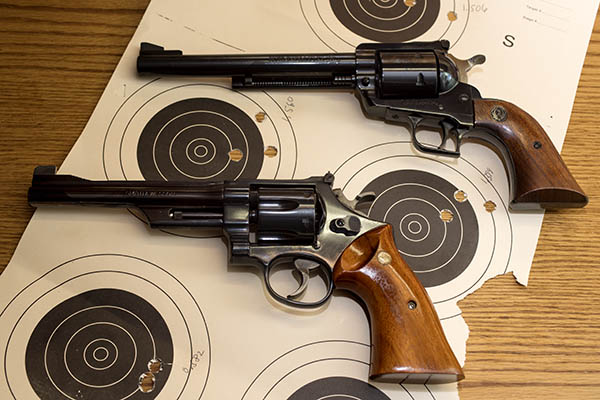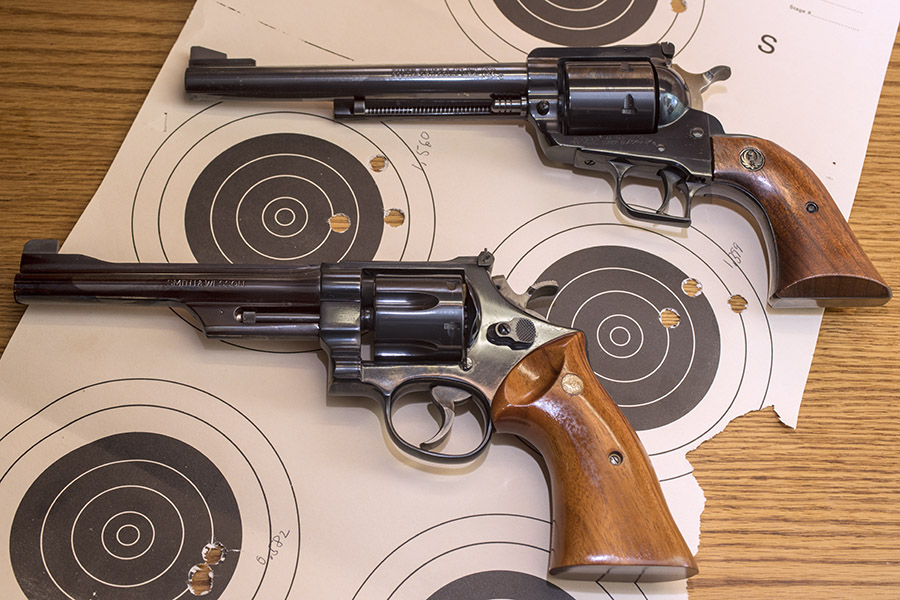The .44 Special: It’s a classic cartridge, one that suggests sixguns, the Old West, and Dirty Harry. Elmer Keith, Remington, and Smith and Wesson created the .44 Magnum, but Clint Eastwood is the guy who put it on the map. Before Dirty Harry, gun dealers had to discount Model 29 Smith and Wessons to get them to move; after the movie, Model 29s were selling for three times MSRP. It was as good an example of product placement as ever existed, and it occurred before the concept of product placement was even created.

But this really isn’t a story on the .44 Magnum. Nope, this is about the cartridge that preceded the .44 Magnum, and that’s the .44 Special. If you were paying attention during the Dirty Harry series, that’s the cartridge ol’ Harry Callahan said he used in his .44 Magnum Model 29 Smith and Wesson. He explained to his sidekick (a wayward, perpetually-confused female detective) that the .44 Special had less recoil than the .44 Magnum (duh). To me, that was the best line in Dead Pool, arguably the worst of the Dirty Harry franchise. I think the producers tried to squeeze too much milk out of the Dirty Harry cow; they should have stopped at Magnum Force and called it a win.
The .44 story is a complicated one. There’s the .44 Russian (predecessor to and shorter yet than the .44 Special), the .44 Special (the topic here today), the .44 Magnum, and the old .44-40. To make matters even more confusing, the bullet is not really a .44 in any of these cartridges; it’s actually 0.429 inches in diameter. But cowboy songs about a .429 wouldn’t have the same ring as the ol’ .44 (think Marty Robbins and his Arizona Ranger ballad), so .44 it is.
The .44 Special and its big brother, the .44 Magnum, have a relationship similar to the .38 Special and the .357 Magnum. The .44 Mag is a longer version of the .44 Special (it has a longer brass cartridge case), just as the .357 Mag is a longer version of the .38 Special (it’s the same deal; the .357 has a longer case). The idea is the longer case holds more propellant, more propellant equals more pressure, and more pressure means more projectile velocity. Like Harry pointed out, you get a lot more recoil with a magnum cartridge (f still equals ma, as we are fond of saying in the engineering world), but real men ought to be able to handle it. Or so the thinking goes. Truth be told, the .44 Magnum is a bit much for me. I greatly prefer shooting the .44 Special (as did the fictional Harry Callahan). But I digress…let’s get back to the topic of this blog.
So Saturday was to be another day and another quest for a “secret sauce” recipe (this time for the .44 Special cartridge). The drill was to get out to the range before it started raining so I could test four different .44 Special loads in two different handguns: A 200th Year Super Blackhawk in .44 Magnum, and a Model 24 Smith and Wesson in .44 Special. I loaded 50 .44 Special rounds for this test; I just wanted to get a quick look near the top and bottom of the load range for two propellants (and those were Bullseye and Unique). The bullet du jour was a 240-grain cast Keith-type semi-wadcutter. I’ve been playing with .44s of one flavor or another since Dirty Harry first graced the silver screen, and the 240-grain cast Keith is as good as it gets. I have a bunch of them on my reloading bench.
I expected the Smith and Wesson Model 24 to do better than the Ruger, and it did. The Ruger can handle both .44 Special and .44 Magnum cartridges, as it is chambered for .44 Magnum. When you shoot .44 Specials (which are shorter than .44 Magnum cartridges) in a gun chambered for the .44 Magnum, the bullet has to jump another tenth of an inch or so to get to the rifling. The Smith Model 24 is chambered in .44 Special, so the barrel’s rifling starts closer to the cartridge than it would in a gun chambered for the longer .44 Magnum cartridge. But the Ruger is a .44 Magnum, and the .44 Special in the Ruger has to make that jump. It’s already smoking right along when it hits the rifling and it’s unsupported during that first bit of its flight. That induces some smearing and distortion when the bullet smacks into the rifling, and that hurts accuracy. The same thing occurs when shooting .38 Specials in a .357 Magnum revolver. It’s why I’ve never been a fan of .45 Colt handguns with the extra .45 ACP cylinder, or .357 Magnum handguns with the extra 9mm cylinder. Those auto cartridge bullets have an even bigger jump to the rifling, and I’ve never seen good accuracy in the shorter auto cartridges in these revolvers.
Anyway, to get back to the main attraction, as explained above I only loaded 50 cartridges for this test, so I couldn’t shoot three groups with each load. This was to be just a quick look, because I had another 250 .44 Special cases primed, flared, and ready to reload back at the ranch. I just needed to know how to load them.
Based on my testing, the near-max load of Bullseye is the cat’s meow. 4.7 grains of Bullseye with the 240-grain bullet was consistent and accurate in both handguns, and it was awesomely accurate in the Smith and Wesson. Here are my results. So you know, all groups were shot at 50 feet, and all were 3-shot groups.

Like I said above, the Bullseye load (again, that’s 4.7 grains with the 240-grain SWC bullet) is great in the Model 24 Smith, and it’s good enough in the Ruger. I mostly shoot .44 Magnum in the Ruger, and I will get better accuracy in that gun firing magnum cartridges than I would with the .44 Special rounds for the reasons explained above. I’ve already got a few great .44 Magnum loads; at some point I’ll develop lighter magnum loads for the Ruger. But that’s a project for another day.
Both the Ruger and the Smith are fine firearms, built in an era when attention to detail mattered to the manufacturers. The Model 24 Smith and Wesson is a real honey of a handgun. I’ve owned it since Mr. Reagan was in the White House, but until this weekend I had not shot it in years. It’s nice to know I can still make it sing. And I love my Ruger, too. It’s a 200th year Ruger made in 1976, the 200th year of American liberty (and all Rugers manufactured in 1976 carry that inscription). I bought the Super Blackhawk Ruger when I was in the Army. Understandably but regrettably, my battery commander wouldn’t let me carry the Ruger in Korea (I had to carry a .45 ACP 1911, but that was a good deal, too).
I’ll have the Ruger out next weekend for our Motorcycles and Milsurps match (watch for the story here on the ExNotes blog). I have a good load for it now, and I should do well. We’ll see.
Want to see more Tales of the Gun stories? You can do so here!
Don’t pay exorbitant range fees for your targets…get them delivered to your door here!
I use RCBS reloading gear. This link will get you in the game
!

